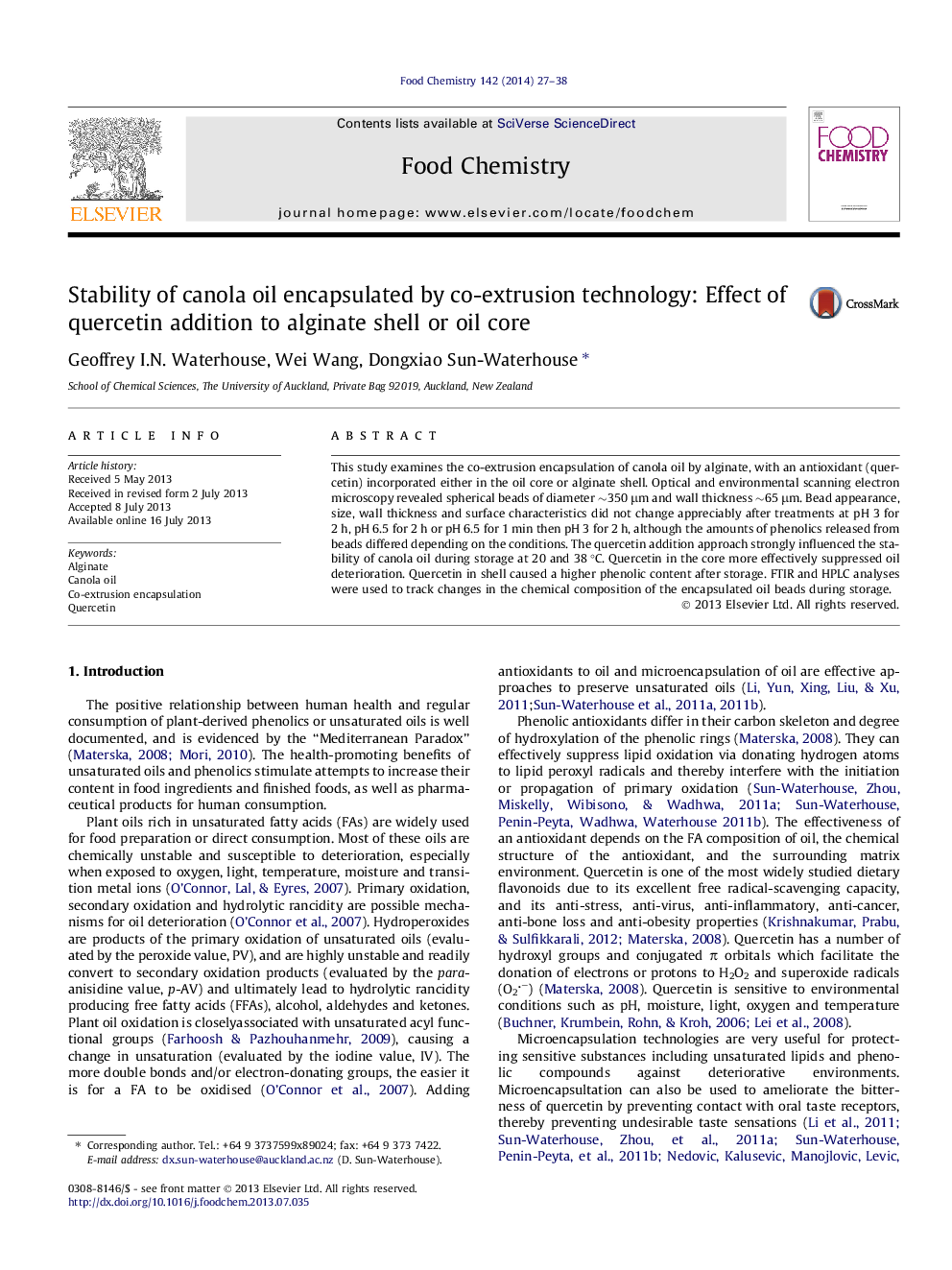| Article ID | Journal | Published Year | Pages | File Type |
|---|---|---|---|---|
| 7600540 | Food Chemistry | 2014 | 12 Pages |
Abstract
This study examines the co-extrusion encapsulation of canola oil by alginate, with an antioxidant (quercetin) incorporated either in the oil core or alginate shell. Optical and environmental scanning electron microscopy revealed spherical beads of diameter â¼350 μm and wall thickness â¼65 μm. Bead appearance, size, wall thickness and surface characteristics did not change appreciably after treatments at pH 3 for 2 h, pH 6.5 for 2 h or pH 6.5 for 1 min then pH 3 for 2 h, although the amounts of phenolics released from beads differed depending on the conditions. The quercetin addition approach strongly influenced the stability of canola oil during storage at 20 and 38 °C. Quercetin in the core more effectively suppressed oil deterioration. Quercetin in shell caused a higher phenolic content after storage. FTIR and HPLC analyses were used to track changes in the chemical composition of the encapsulated oil beads during storage.
Keywords
Related Topics
Physical Sciences and Engineering
Chemistry
Analytical Chemistry
Authors
Geoffrey I.N. Waterhouse, Wei Wang, Dongxiao Sun-Waterhouse,
